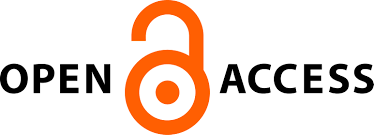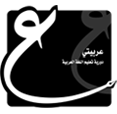تصميم منهج الدورة والتدريبات في اللغة العربية للمستوى التمهيدي في مركز الدورات والتدريبات بجامعة دار السلام كونتور
Keywords:
Curriculum, Education and Learning, Pre-A1 LevelAbstract
This research was conducted to analyze the design of the Arabic language education and training curriculum at the pre A1 level based on the CEFR at the Center for Education and Training (Pusdiklat) UNIDA Gontor. The focus of this study is on the Arabic language training provided for intermediate-level participants who are very beginner to learning Arabic actively and communicatively. A qualitative approach and Research and Development (R&D) method using the ADDIE model (Analysis, Design, Development, Implementation, and Evaluation) were employed in this research. Practically, this study is currently at the second stage, 'design,' of the ADDIE model, following a needs analysis conducted with the training participants. Data were obtained through interviews and documents related to the Arabic language training that has been conducted by the Center for Education and Training UNIDA Gontor which was analyzed throughout content analysis. The research findings indicate that: 1) the majority of Arabic language training participants are intermediate-level students who are just beginning to learn Arabic in an active and communicative manner (introductory level); 2) the Center for Education and Training refers to the language proficiency levels established by the Directorate of Language Development (DLD) at UNIDA Gontor based on the CEFR with modifications; 3) the pre A1 proficiency level at the UNIDA Gontor Training Center allows participants to use Arabic vocabulary in simple and acceptable conversations (self-introduction, personal and environmental questions), read simple sentences, and write Arabic letters correctly according to the rules.
References
Alam, R. A. S. F. S. (2019). Implementasi Program Pemantapan Bahasa Arab Dan Shahsiah Mahasiswa Istanbul Sabahattin Zaim Universitesi (Izu) Tahun 2019. Prosiding Konferensi Nasional Bahasa Arab, 5(5), 191–198.
Al-ghifari, F. A. S., Mufidah, N., & Daka, A. H. (2023). إدارة مركز الدورات والتدريبات في نتفيذ الدورة المكثفة في اللغة العربية لطلبة المدرسة الثانوية بجامعة دار السلام كونتور مؤسسا على إدارة المدرسة. In Edufest: Konferensi Nasional Tarbiyah UNIDA Gontor. ponorogo: Faku;tas Tarbiyah UNIDA Gontor.
Ansyar, M. (2017). Kurikulum: Hakikat, Fondasi, Desain dan Pengembangan (1st ed.). Jakarta: Kencana.
Arifin, M. S., Sa’idah, M. A., Nur, I. R., & Zulfiqar, A. (2023). Pembelajaran Bahasa Arab Digital Pusdiklat Unida Gontor: Studi Kasus di Diklat Bahasa Arab di Al-Azhar IIBS Karanganyar. In F. A. dan H. U. S. Ampel (Ed.), The International Conference on Islamic Civilization and Humanities (ICONITIES) (pp. 383–394). Surabaya. Retrieved from https://proceedings.uinsa.ac.id/index.php/iconfahum/article/view/1332
Baharun, H. (2017). Pengembangan Kurikulum: Teori & Praktik. Probolinggo: Pustaka Nurja.
Bahasa, D. P. (2023). Alikhtibar: Program Standarisasi Bahasa Universitas Darussalam Gontor. ponorogo: DPB Publisher.
Daud, W. M. N. W. (1998). The Educational Philosophy and Practice of Syed Muhammad Naquib Al-Attas: An Exposition of The Original Concept of Islamization (1st ed.). Kuala Lumpur: ISTAC.
Europe, C. of. (2020). Common European Framework of Reference for Languages: Learning, Teaching, Assessment-Companion Volume. New Cambridge Modern History (Vol. 13). Strasbourg: Council of Europe Pusblishing. Retrieved from www.coe.int/lang-cefr
Ghozil Aulia, M., Agung Rokhimawan, M., & Nafiisah, J. (2022). Desain Pengembangan Kurikulum dan Implementasinya untuk Program Pendidikan Agama Islam. Journal of Education and Teaching (JET), 3(2), 224–246. Retrieved from https://doi.org/10.51454/jet.v3i2.184
L. Moleong. (2018). Metodologi Penelitian Kualitatif (38th ed.). Bandung: PT Remaja Rosdakarya.
Mandzur, I. (2013). Lisan al-Arab. Kairo: Dar al-Hadith.
Mohamed, S. (2023). The development of an Arabic curriculum framework based on a compilation of salient features from CEFR level descriptors. Language Learning Journal, 51(1), 33–47. Retrieved from https://doi.org/10.1080/09571736.2021.1923781
Mohammad Ismail; Rahmadin Ariga; Amir Reza Kusuma. (2024). Konsep Pendidikan dalam Peningkatan Bahasa Arab Menurut KH. Imam Zarkasyi. AL-AFKAR: Journal for Islamic Studies, 7(1), 1120–1133. Retrieved from https://doi.org/10.31943/afkarjournal.v7i1.916.Educational
Musthofa, T. (2022). CEFR-Based Policy in Arabic Language Teaching and Cultural Dimension in Indonesian Islamic Higher Education. Eurasian Journal of Applied Linguistics, 8(2), 96–107. Retrieved from https://doi.org/10.32601/ejal.911545
Nainggolan, E. E. (2018). The Teaching of Reading Comprehension Based on 2013 Curriculum at Senior High School. Getsempena English Education Journal (GEEJ), 5(2), 91–102.
Nurcholis, A., Syammary, N. A., & ... (2021). Implementasi Program Pemantapan Bahasa Arab Peserta Program Kaderisasi Ulama (Pku) Gontor Tahun 2021. … Nasional Bahasa Arab, 259–271. Retrieved from http://prosiding.arab-um.com/index.php/konasbara/article/view/985
Nurdianto, T., P, N. J., Fatoni, A., & Kalita, S. (2022). CEFR-Based Beginner Arabic Reading And Writing Curriculum Design In Indonesia/ Desain Kurikulum Membaca dan Menulis Bahasa Arab Pemula Berbasis CEFR di Indonesia. Ijaz Arabi Journal of Arabic Learning, 5(3), 718–738. Retrieved from https://doi.org/10.18860/ijazarabi.v5i3.16684
Pratama, A. W., Mahliatussikhah, H., & Murtadho, N. (2024). Opportunities and Challenges of Common European Framework of Reference for Language ( CEFR ) Standardization in Arabic Language Learning Arabi : Journal of Arabic Studies, 9(1), 33–42.
Pribadi, R. B. A. (2009). Model Desain Sistem Pembelajaran. (Y.S. Hidayat,Ed.) (1st ed.). Jakarta: Penerbit Dian Rakyat.
Setiyadi, A. C., & Subliansyah. (2019). Arabic Language Curriculum For Non-Native Speakers (Descriptive Study of The Arab Intensive Arab Language Course at The University of Darussalam Gontor). Educan : Jurnal Pendidikan Islam, 3(1), 66. Retrieved from https://doi.org/10.21111/educan.v3i1.3561
Sugiyono. (2020). Metode Penelitian Kuantitatif, Kualitatif, dan R&D. (Sutopo,Ed.) (2nd ed.). Bandung: Alfabeta.
Sukmadinata, N. S. (2010). Pengembangan Kurikulum: Teori dan Praktek (13th ed.). Bandung: Remaja Rosdakarya.
Sumarni, S. (2019). Model Penelitian dan Pengembangan (R&D) Lima Tahap (Mantap). Riset & Pengembangan, 38.
Webster, M. (1963). Webster’s Seventh New Collegiate Dictionary. Massachussetts: Merriam Company Publishers.
الخليج, ا. ا. ل. ا. ل. (2023). الإطار المرجعي لتعليم اللغة العربية للناطقين بلغات أخرى: تأليف - تعليم - تدريب (أمتاع) (1st ed., Vol. 1). UEA: المركز التربوي للغة العربية لدول الخليج. Retrieved from www.alecgs.ae
Downloads
Published
Issue
Section
License
Copyright (c) 2025 muhammad syamsul arifin syamsul, Mohammad Syauqhi Radjfi, Mandrasi Amira Sa’idah (Author)

This work is licensed under a Creative Commons Attribution-NonCommercial-ShareAlike 4.0 International License.







